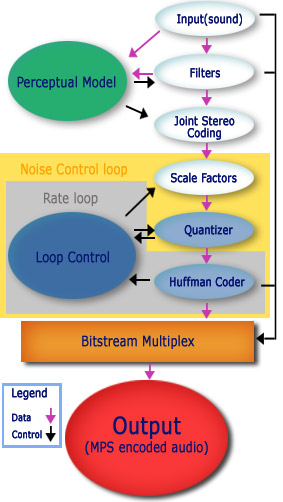
This part of the encoding comprises two parts. First, a polyphase filterbank, then a Modified Discrete Cosine Transform (MDCT). The basic idea is 'divide and conquer.' The encoder breaks up the signal into parts and then eliminates (in later steps) the redundant information.
The polyphase filterbank divides the signal into 32 equal bands
. However, these 32 equal bands have some overlap. Incidently, MPEG Layer 1 and 2 both use a similar polyphase filterbank, but the next part, MDCT, is added in Layer 3.
The MDCT
applies a separate window, individually controlled by the perceptual model, to blocks of data from each of the incoming 32 bands from the polyphase filterbank. The analysis of the perceptual model determines whether a long or a short window is used. If a short window is used, then this band is further divided into 6 frequencies (and the window length is 8 ms at a sampling rate of 48 kHz). If a long window is used, then the band is divided into 18 frequencies (a window length of 24 ms at a sampling rate of 48 kHz). Therefore, the total number of frequencies bands at the end of the filters is either 192 (6 * 32) or 576 (18 * 32). The long window could be considered the default window, while the short is used to handle transients.
click for advanced topic on MDCT!